Business Plan Examples Templates
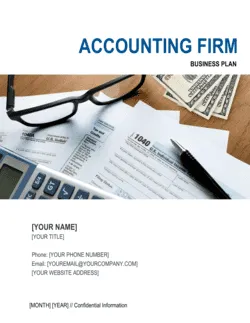



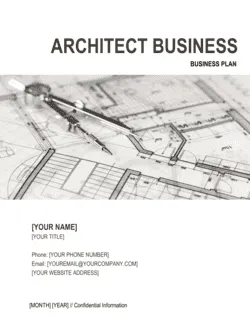



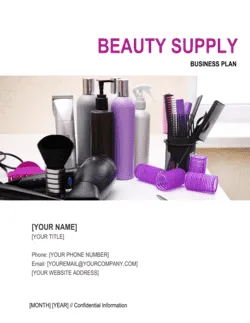



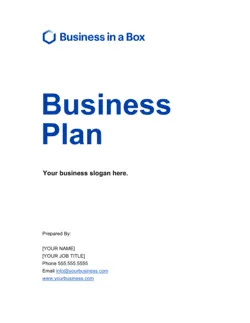
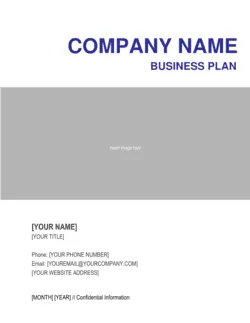
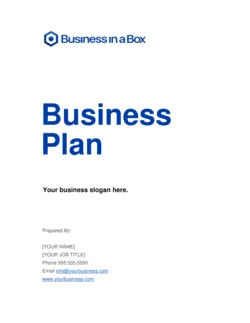
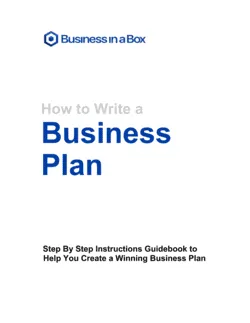
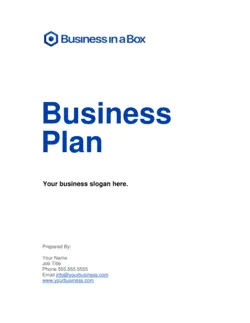
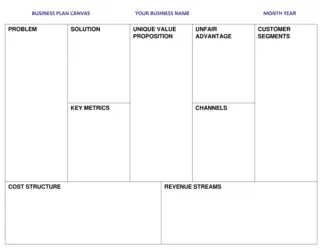
161+ Business Plan Examples:
How to Create your own Business Plan
A business plan is an essential foundation on which any business stands.
For every new entrepreneur hoping to attract investors, partners, or any kind of stakeholders, they must first present an immaculate and well thought out business plan to convey their confidence, willingness to take risks, and their overall vision for the entire venture.
Beginners often find themselves confused about the major components of a business plan, which is why Business-in-a-Box has provided this comprehensive guide on business plans, as well as hundreds of business plan examples and templates to aid you on your journey.
What is a Business Plan?
A business plan is a detailed document that outlines a business’s major targets and goals, as well as how it intends to achieve them. Once your business plan is all laid out, it becomes a roadmap to guide you in every phase of growth. For this reason, it should cover the marketing, operational, and financial aspects of your business, and be written in a flexible manner which accounts for future growth and change.
Importance of a Business Plan
Usually, the importance of a business plan is stressed upon for new businesses. This is because new businesses begin at the survival stage of their growth, and they need help in the form of attracting investors and building some kind of viable commercial potential for themselves. The business plan is important as it sends a message to its readers that you, as the owner, are bringing not just focus and dedication, but also an executable game plan to the table.
A business plan is normally a prerequisite required by banks before lending, which makes it extremely important in gaining finance. New businesses will not have much else to convince the bank that they can make timely return payments on the loan. Creditors such as banks are keen to observe any risk factors before lending, but a detailed yet concise business plan can convince them that you’ll be able to generate a set amount of profit in a given period and absolve yourself of your credit.
4 Benefits of a Business Plan:
Here are 4 of the most important benefits of a well-done business plan.
1. Creates a Guideline for Action
A business plan is more than a mandatory prerequisite that you must create to appease a bank. While attracting investors and banks is advantageous on its own, the business plan is, as mentioned earlier, a roadmap and a guideline. The essence of your business; your vision, dream, goals are contained within it. This makes it a helpful document to refer back to at every step of growth, to track your progress and see how close or far you are to the original targets you laid out in the plan.
2. Increases Clarity
Once you sit down and construct a business plan, your startup idea goes from a series of ideas in your mind to an actual, tangible written document in front of you. During the writing process, you will be forced to reflect, rethink, and reorganize your ideas into the most practical, concise, and clear manner, which can lead to alterations in your actual execution of it when the time comes. This change is most likely to be for the better and will help you make your business operations as effective and efficient as possible.
3. Securing funds and other talents
As mentioned earlier, a business plan is crucial in getting funds. The financial section of your business plan is especially important in this regard as it is referred to often by potential investors. However, the business plan doesn’t just attract investors. It can also be used to attract other professional services such as consultants, attorneys, accountants, etc. Most important of all, your business plan can serve to attract potential employees who share in your vision and can bring valuable skills and talent into your business.
4. Cost-effective method of planning and strategizing
Compared to other methods of planning and assessment, such as hiring marketing professionals or other consultants, drafting a business plan yourself will create an assessment of your company’s strengths and weaknesses in a relatively cost-effective manner. You will also be creating detailed guidelines to serve you and your employees, which is something that is usually handled by management professionals. In this way, you can save up on expenses without compromising quality or efficiency in any part of your firm. The Business-in-a-Box template can serve well in this regard, as they are designed to help you create your business plan for your specific product or service without difficulty or hassle.
Business Plan Examples
Business-in-a-Box provides a definitive list of over 160 business plan examples for all businesses and industries. While every business is unique, these templates can still help you get a clear guide to building the ideal plan, which in turn will help you gain finance and clarity for your business. We have business plan examples in word format available, which you can download and edit in Microsoft Word for your ease. We are also providing you with a free guidebook on how to create a business plan in pdf format.
The business plan examples range from simple business plans, such as farm business plan, restaurant business plan, spa business plan, etc.
We also have plans for more complex and intricate ideas such as marketing consultant business plan, construction company business plan and law office business plan available.
Essential Components of a Business Plan
While there is a range of business plan examples to choose from, all business plan examples have similar essential components, which can be edited to suit your particular needs. These components are:
1. Executive Summary
The same way you may read the back of a book to find out more about its contents, the readers of your business plan will first refer to its executive summary to find out if anything in your business interests them. The executive summary benefits from conciseness, which means the essential knowledge about your business must be stated in a short, clear, and straightforward manner. Although it appears at the very beginning of the business plan, it should be written after the plan is already drafted. The Business-in-a-Box template for executive summary allows you to add the following essential information:
- Company Description
- Opportunity/Problem
- Your Solution
- Target Market
- Clients
- Revenue Model
- Marketing and Sales Channels
- Competitors
- Your Team
- Your Strengths and Weaknesses
- Your Needs
- Goals You Wish to Achieve
- Financial Projections
Every business plan is unique, which is why every executive summary will also be unique. These are, however, some indicators of which information holds the most significance in the eyes of your investors, and which information they will wish to see first before they decide to read further. Building a good image of your company is key, which is why we have phrased this template in a manner that shows a unique and innovative side to your business idea, encompassed within a clear and modern document design.
2. Opportunity
The opportunity section of your business is more subjective, but it is full of vital information. This is the section where you describe the ‘gap in the market’ that you discovered - perhaps you are a Beauty Salon trying to fulfill better hair treatment needs of people in your area or a web developer who has come up with an app that can bring new enrichment to people’s lives. The needs that are being left unfulfilled are the ‘gap’ which you are going to exploit. Oftentimes, it is difficult to come up with a gap in the market that other businesses haven’t already discovered. However, you must bring something innovative and new to your product or service that your competitors don’t have. In the opportunity section of your business plan, it is crucial to highlight your innovation and how it stands out from others.
This section also contains details on your target market and the industry you wish to operate in. If you have conducted primary research on the demographics of your potential customers, this is the place to add it. It would also be beneficial to add the detail of your competitors to help show investors how prepared you are to enter the industry.
3. Execution
The execution stage of your business plan is the actual action stage, where you show your readers how you intend to run your business. Business-in-a-Box business plan examples include the major components of Marketing and Operations.
Marketing
This section of the business plan describes how you will promote and advertise your product or service. For example, a beauty parlor business may choose to advertise mainly through social media, by providing visually pleasing and informational posts that promise results to the customers. You will also cover the details of your pricing methods in this section.
Operations
This is the logistics section, which describes how things will work on a day to day basis within your business. You will have to state how you intend to source, manufacture, and distribute your product or service.
You might also find it useful to state your intended goals and targets in this section, which you can use as future references once your marketing and operations are up and running.
4. Strengths and Weaknesses
It is essential to state the strengths and weaknesses of your business when creating a business plan. To adequately find out your business’s strengths and weaknesses, a SWOT analysis can be conducted. The SWOT analysis stands for:
Strengths
These are the internal, positive attributes of your company, the aspects that lead to successes. They can include assets, employees, or anything that gives you a competitive edge.
Weaknesses
These are internal, negative factors. They can include gaps in your skill level or assets or company processes that aren’t so successful in boosting sales.
Opportunities
These are external factors that can help your business succeed, such as marketing trends, events, etc.
Threats
These are external factors that have the potential to hurt your business. They can include new competitors, technology, trends, etc.
The SWOT analysis gives your reader an insight into your business like no other, and even the weaknesses that you state can help build an understanding of your firm. If you provide viable solutions alongside, it will do even more to build investor confidence.
5. Financial Plan
The Financial part of your business plan is arguably the most important. This is the section where you can back all your claims up with hard, numerical facts, which will boost investor confidence even more. For new businesses, the business plan example templates give a Sales Forecasting table and chart to help you calculate and predict your sales. There is also a section on Break-even analysis, which calculates how long it will take you to start making a profit rather than a loss in your business.
6. Management Summary
This section outlines the structure of your company. Identify key personnel and your management team, as well as their roles in the leadership of your business. This is important for investors to know as it helps build trust if they know the details of who is behind the company. It is similar to giving personality to your business and building an image of who you are and what you stand for in the investor’s eyes.
Now that you are aware of the benefits and components of a business plan, you are prepared to create one of your own. Using the Business Plan Examples provided in Business-in-a-Box, you can get started in preparing an eye-catching, detailed, concise business plan which will serve your endless business benefit.
Signup to get full template previews or to browse a collection of over 2,000 templates.
